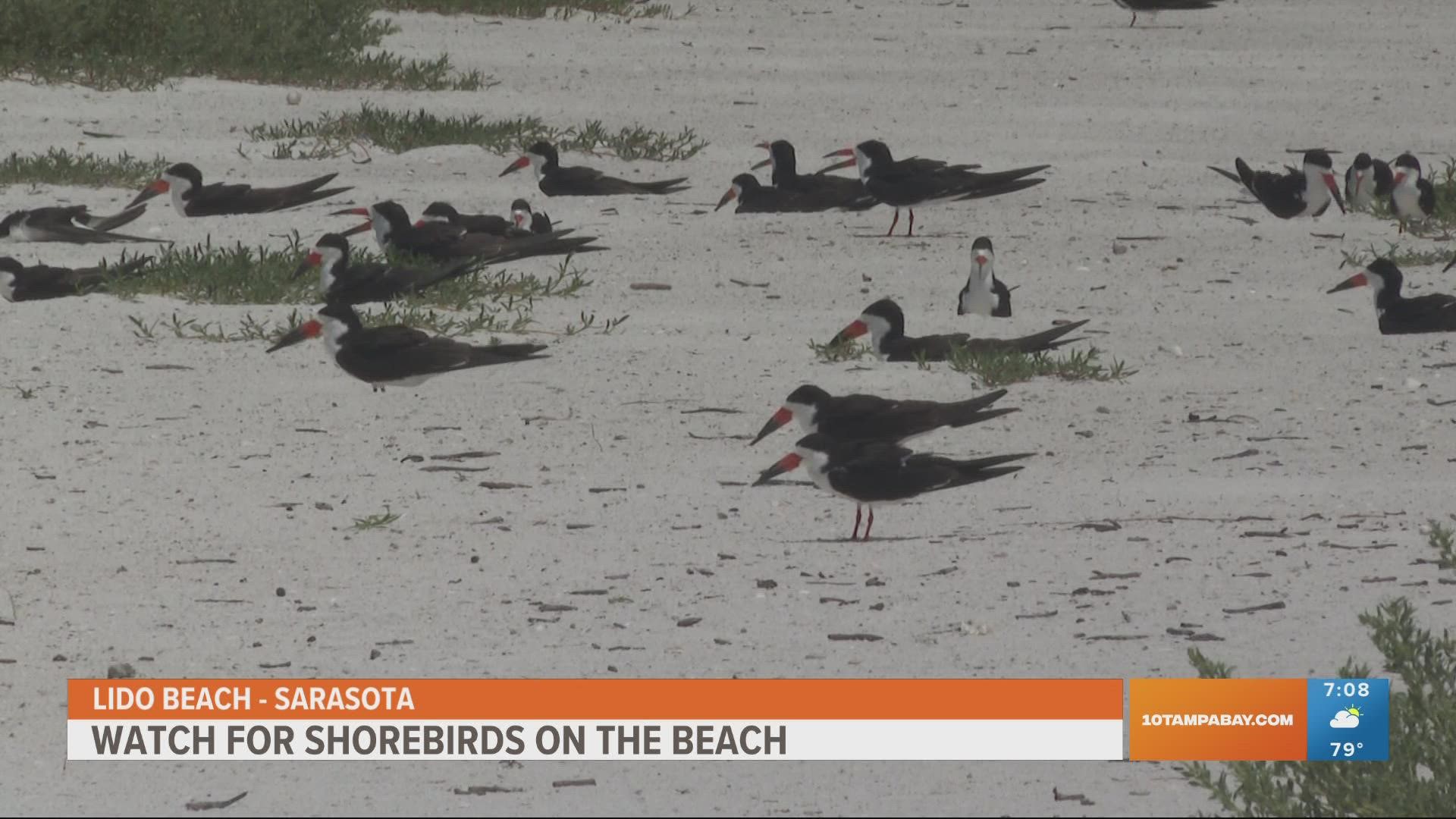ST. PETERSBURG, Fla. — Just in time for Independence Day weekend, the Florida Fish and Wildlife Conservation Commission released tips on how beachgoers can protect some of Florida's most vulnerable creatures: beach-nesting birds.
According to FWC, shorebirds and seabirds rely heavily on Florida's beaches for nesting success. Fireworks or any close disruption can disturb the animals, causing the adults to fly away and leave nests vulnerable.
Here are FWC's tips on how you can keep the beach-nesting birds safe:
- "Do the flock walk." Stay at least 300 feet away from the birds and their nests. Getting too close can cause the birds to leave their nests, leaving their babies exposed to predators and the elements.
- Read the signs, and look out for critical wildlife area closures. FWC says these areas are closed to beachgoers.
- Keep the doggies away. Even the cutest pup can scare the birds away causing vulnerable eggs and chicks to be exposed or even abandoned.
- Don't litter. FWC says food scraps and trash can attract predators. Animals can also potentially get entangled in litter.
- "Leave fireworks to the professionals." FWC says loud sounds and bright lights from personal fireworks can cause "catastrophic effects on nesting birds and their chicks, as well as nesting sea turtles."
Click here for more information about beach-nesting birds in Florida.
Black Skimmers have been nesting at Lido Beach. It's one of the largest colonies in Florida.
"Skimmers are a very unique and quirky bird, and if we don't do what we can to protect birds like this, all we're going to have left are the gulls and the crows. So, we want to make sure that we're doing everything we can to preserve all parts of our beach ecosystem here," Kylie Wilson, the shorebird coordinator for Audubon Florida, said.
The FWC also urges beachfront residents to follow three “golden rules” when it comes to artificial lighting: light fixtures should be mounted as low as possible, only produce long-wavelength light and be shielded from the beach.
Some other ways to decrease harmful light pollution include turning off unnecessary lights — even if you're indoors — planting vegetation buffers such as seas grapes or other native plants to shield the light source, shutting blinds or curtains and using motion detector lights set to the shortest time setting.
Sea turtle nesting season lasts from May 1 through Oct. 31 of each year in Florida. Many beaches offer turtle tours during this period. Though beachgoers may be tempted to snap pictures of sea turtle nest areas, people are urged not to take flash photos as this can also interfere with the turtles’ sense of direction.
Some great locations to experience sea turtle nesting in the Sunshine State include Von D. Mizell-Eula State Park, Loggerhead Marine Life Center and the Sea Turtle Preservation Society. Other sea turtle hot spots can be found here.

